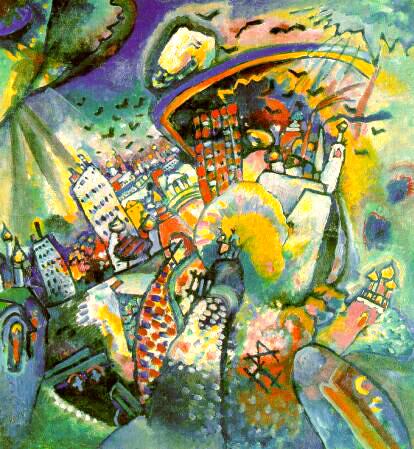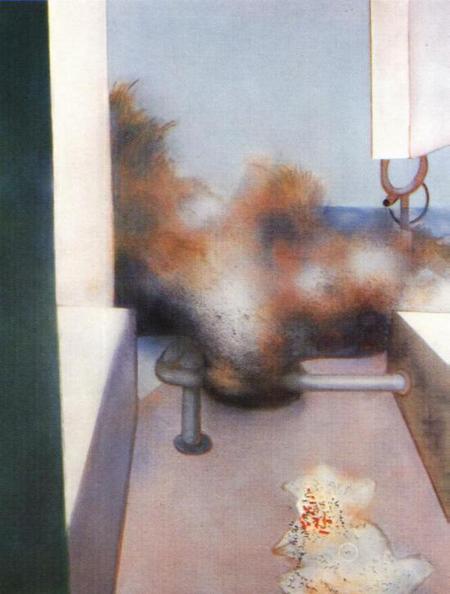Philosophers have interpreted the world, the point is to escape from it
Mon. February 14, 2005Categories: Abstract Dynamics

A face-off last Thursday, at the Centre for Research in Modern European Philosophy at Middlesex University, between Badiou (as advocated by the Prince Charming of Cold Rationalism, Peter Hallward) and State Philosophy – Continentalist wing.
Peter situated Badiou’s project in the wider sweep of a ‘subtractive turn’ in French theory. The tendency to subtract, Peter claimed, was a constitutive feature of figures as diverse as Bergson, Sartre, Levi-Strauss and Foucault, but Peter was interested in a particular inflection of this general trend in world-dismantling: a philosophy that aims to strip away ‘the worldly’, that would tear down the Garden of Earthly Delights.
Such a philosophy finds itself in conflict with the phenomenological tradition stewarded by Hegel, Husserl and Heidegger, even if it wouldn’t define itself by opposition to it, given Badiou’s well-known exasperation with ‘”fighting against,” … “deconstructing,” … “surpassing,” … “putting an end to,”‘. It’s a question of sidestepping that trajectory, which is itself defined by the problematics of deconstructing and putting an end to, and which lures the unwary into its bad infinity of labyrinthine existential despondency with invitations to critique, always critique.
For me, this sets Badiou firmly outside (what has been called) ‘Continental Philosophy’, which has functioned as a synonym for the three H’s and their legacy. In addition to the substantive philosophical differences between Badiou’s rationalism and the phenomenology of the Hegel-Husserl-Heidegger axis , the very concept of a philosophy qualified by locality is profoundly opposed to everything Badiou writes.
Peter’s decision to focus, in his presentation on Thursday, on Michel Henry and Gilles Deleuze (the subject of Badiou’s book The Clamour of Being) was motivated by the claim that, although Deleuze in particular has been seen as breaking out of the Heideggerian intensive death camp, both he and Henry remain caught in the white magical circle of phenomenology.
The Heideggerian project is marked by its fixation on ‘positive describable entities’, by its yearning for resacralization, for a return of the Gods. Badiou’s philosophy, by contrast, is defined by its refusal of Reform at all levels; his substractive ontology is not then part of post-modern/structuralist nostalgia for presence, fullness, authenticity – such nostalgia is nowhere more in evidence than in the denial of the possibility of these states: hence the depressive plaint of the always-already undead: of course, presence was never possible, so of course all we can do is mourn the non-existence of what was never there, nor ever could be… While this pious melancholia turns shilly-shallying lack of commitment into the highest ethical injunction, Badiou’s is a philosophy of engagement and active decision. His subtractive procedure is the ruthless evacuation of everything taken-for-granted as a prelude to the construction of a new Good.

Michel Henry attempts a similarly exhaustive ontological extirpation, from an explicitly phenonemonological base, albeit of an aberrant kind. For Henry, whose neo-Gnostic philosophy is expressed in such books as I Am the Truth: Toward a Philosophy of Christianity, the World (and the Worldly) is to be opposed to Life. Naturally, Henry’s Life has nothing whatsoever to do with organic life or indeed anything as it appears to us. It can only be felt and suffered, not seen. It can be gestured towards in the abstract art of someone like Kandinsky, but any attempt to constitute it as a positive entity is murder. The worldy is a dark heavy canopy whose soot and gravity snuff the lightness of the Divine spark.
For Peter, the problem with Henry is his retaining of the category of Experience. Henry’s Gnostic revelation is precisely felt rather than thought. Badiou’s Cartesian conviction is that only concepts and cognition are egalitarian, that is to say, in principle at least, accessible to all. Experience depends upon animal specificity; thought explodes everything local.
Peter argued that Deleuze, too, retains a commitment to Experience. He approached Deleuze’s corpus via the study of Bacon, The Logic of Sensation. Bacon emerges as an artist of subtraction: he begins by isolating figures from their ‘natural’ background before subjecting them to processes of deformation, dissipation, shadowing and smudging so that they end up as abstract streaks. But Bacon’s abstraction is a kind of middle way between pure abstraction, which buries the creative spark in geometric formalism, and abstract expressionism, which surrenders form to chaos.
Contrary to what one brow-furrowed Continentalist claimed in the questions afterwards, Deleuze’s discussion of this third type of abstraction is not unique to the Bacon book. Neither does his characterization of Bacon depend upon ‘mortgating your theory to a dubious history of art’, as another Continentalist complained. The abstractive process Deleuze described proceeds logically, not chronologically, and the theorization of abstraction is an abiding fixation in both Deleuze’s own works and in his collaborations with Guattari. The mode of abstraction Deleuze advocates is ‘the Northern, or Gothic line’ theorized by Wilhelm Worringer in Abstraction and Empathy and Form in Gothic.
Worringer’s Schopenhauerian history of art placed abstraction first. The earliest art, Worringer maintained, was an attempt to subdue the forces of chaotic Nature with rectilinear forms. As humanity becomes more settled, it develops an ‘organic’ representational art which centres on the human figure. The Gothic line interrupts this representational repose with an unsettling new form of abstraction, which is neither purely mechanical as in primitive abstraction nor organic as in Greek and Roman representationalism: this barbaric line is uncanny, zigzagging; a ‘vitalized geometry’. For Deleuze, is in this line, and in the germinal pulse that animates it, that we are to locate those figures that arouse horror in us through their occupation of an interzone between life and death, animate and inanimate. Nonorganic Life is the throbbing energy formation Deleuze follows through nomad art, Gothic cathedrals, German expressionist cinema and Bacon.

As with Henry, Deleuze is compromised, then, by his reliance upon the pseudo-category of Life – which as Nina rightly said is philosophically AND scientifically vacuous. Like Henry, Deleuze is at pains to distinguish his Life from any life that we would recognize – which begs the question, why use the term at all? Wouldn’t ‘nonorganic death‘ serve equally well – which is to say, wouldn’t it be equally meaningless?
There’s no doubt that Deleuze encourages psychedelic fascism, if he isn’t actually guilty of it. From Badiou’s POV, there is too much reliance on an Experience of the Intensive. Something like ‘Of the Refrain’ (from A Thousand Plateaus) is dripping with the the worst type of Nietzscheanism in its vision of a cosmos efflorescing with creative innovation.
But there was always a tension, if not to say a contradiction, in Deleuze’s thought between a cold constructivism and a ‘hot’ creationism. The greatest sleight of hand that he performed was making it appear that Spinoza and Bergson were compatible, never mind complementary. His best pages are always those in which he is at his most Spinozist, which is to say, his least vitalist. The desolated vision of matter as the product of the ‘sterile, unengendered’ Body without Organs is a machinic restatement of Spinoza’s anti-theist cosmotheology. And the BwO is precisely to be reached by subtraction: it is what is left when you take everything away.
Peter positioned Badiou as the theorist with the resources most able to break once and for all with vitalist creationism. By operationalizing Godel and set theory, Badiou’s rationalism makes no concessions at all to the worldly or to the empirical. No longer slaved to phenomenal causality, it operates according to an if-then procedure of logical consequentialism.
In terms of Lacanian theory, Badiou is invested, not in the Imaginary (like Wilden, Irigaray, Kristeva) but, with Zizek, in the Real. The too-quick Deleuzian retort to the Lacanian slogan that ‘the Real is impossible’ misses the crucial continuation of the point: that the Real is impossible but it happens. The Real is what is not computable or countable within the current regime, what is Not-One, what cannot be positively characterized. It can be known only by implication; the echoes of the Kantian noumenal are obvious, and deliberate. (Incidentally, the emphasis on the Not-One is one reason why Peter’s opposing of Badiou to Irigaray in the introduction to the Ethics is slightly misleading, I think.)
Badiou’s biggest break from Continentalism is in his return to conviction and engagement. Spinoza and (whatever their flaws) Marx and Sartre differ from the mainstream philosophical tradition in their fundamental orientation towards the practical. The Continentalists (who are basically the postmodern equivalent of the German Idealists subjected to derision by Marx, but without the excuse that his Materialist inversion had not yet happened) literally cannot understand this. Their laughable assumption is that Marx can be treated as yet another moment in the development of Idealism. But of course that’s what Idealists have to think.
But the Continentalists should be ignored. The most productive area of conceptual discordance is that between Badiou and Deleuze-Guattari. Perhaps we’re in a position to use each to decode the blind spots of the other. Deleuze-Guattari have never been properly assimilated into Continentalism (the sad vitalist zombie that stalks the halls of the academy in their name is testament to that) because they too are philosophers of commitment, in which philosophy knows its place: as a theory of action, not a substitute for it.
[…] blogosphere’s better-known interlocutors. This was true enough for Mark Fisher himself, who wrote in 2005: “The most productive area of conceptual discordance is that between Badiou and […]